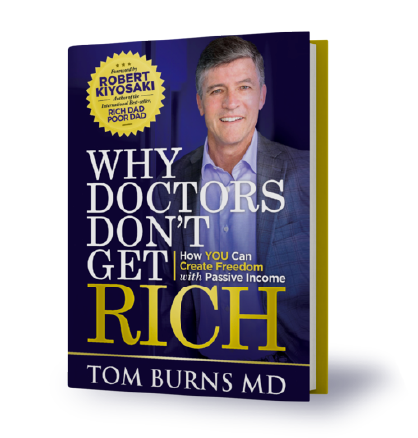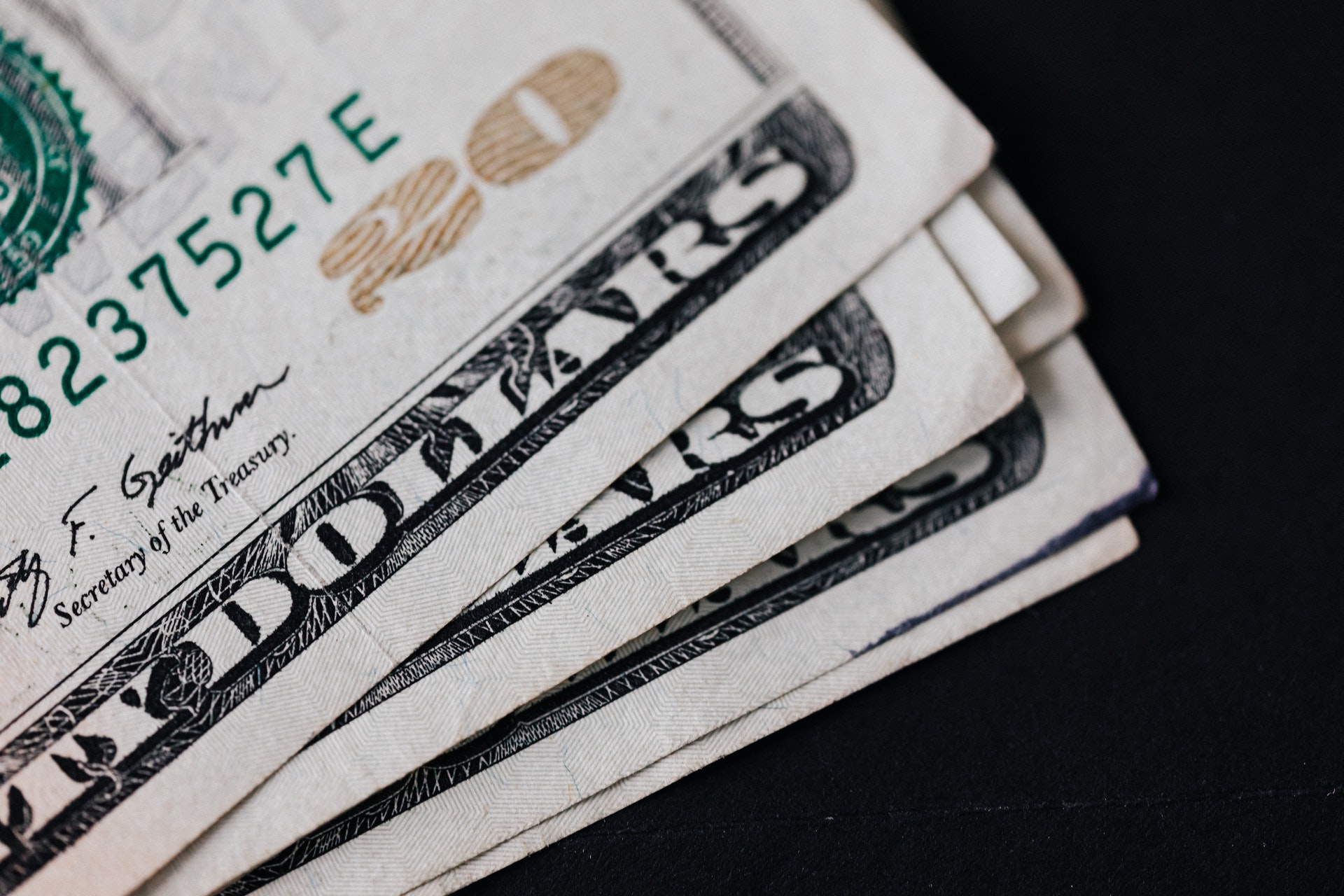This is a guest article from my friend, Leif Dahleen, who writes the Physician on Fire blog.
Leif and I met at a conference and he was kind enough to write a review of my book, Why Doctors Don’t Get Rich. He was very complimentary but took issue with my treatment of the stock market.
While he and I still do not agree 100% on all points represented below, he presents a well-researched piece, with sound thoughts and advice on the equities market.
It’s my goal to get as much helpful information to you as possible. Leif was able to retire from his job as an anesthesiologist by following these principals. So, enjoy the article, and take with you the information that will help you achieve your goals.
Tom
I’m not the wealthiest doctor out there, but I became rich enough with a multiple-7-figure portfolio invested mostly in stock index funds to retire from medicine in my early 40s.
I didn’t get lucky with one fortunate stock pick or by choosing the right market sector to focus on. I was happy to take the returns that the entire market gave me, even when those returns were negative early in my career. That actually turned out to be quite fortuitous as it was a tremendous buying opportunity.
I do believe that real estate investments can also provide excellent returns, but I feel that those who invest primarily or exclusively in real estate can be dismissive of the stock market. Ignoring or disregarding an avenue that has led to so much wealth creation is, in my opinion, shortsighted and can be a disservice to those who read and listen to what you may have to say.
My goal is to provide a brief overview of what to expect when investing in the stock market and how to do so in a simple, passive, effective manner.
Those Pesky Paper Assets
Yes, I used what you might call paper assets and a strong savings rate to reach financial independence about a decade after the start of my anesthesia career. I have a strong distaste for that term, “paper assets,” as the companies you invest in with stocks and bonds are very much real with factories, office buildings, and retail outlets providing and creating useful products and services we use every day.
I’ll try not to refer to real estate investments as “alternatives,” and I would love it if you’d reciprocate by not referring to stocks as paper. They don’t typically issue stock certificates on paper anymore (but the deed to property is very much a piece of paper).
I went on a longer diatribe on this topic in my review of Dr. Tom Burns’ Why Doctors Don’t Get Rich, so I won’t belabor the point further here. The fact is that having fractional ownership in a publicly traded company (owning stock) or lending money to these companies (holding bonds) can be a highly profitable endeavor.
Keep It Simple
To be successful as an investor in stocks, it’s important to own stocks that give you the highest returns. Often, most of the positive returns from an index like the S&P 500, which is comprised of 500 of the largest publicly traded profitable U.S. companies, come from just a handful of high flyers.
It’s challenging to predict which companies or sectors will do well from year to year. Most professional money managers who attempt to do so fail. The returns from different asset classes are also difficult to prognosticate. The Callan Periodic Table is an excellent visual representation of the seemingly random nature of overperformance and underperformance.
How can one manage to own the best companies, sectors, and asset classes year in and year out?
It’s simple, actually. Just own them all.
The Three Fund Portfolio
You can own virtually every publicly traded company worldwide along with thousands of government and corporate bonds of various durations with the purchase of three funds.
A typical three fund portfolio consists of:
- A total US stock market fund
- A total international stock market fund
- A total bond fund
Holding these three funds gives you amazing diversification and guarantees you’ll own the equities that give the strongest performance.
The downside, of course, is that you also own the losers. You’re also going to get market returns and not the returns of only the top companies. I am perfectly content with this knowing that most who try to beat the market can’t do so consistently and that making bets on specific stocks or market sectors only adds uncompensated risk.
“Don’t look for the needle in the haystack. Just buy the haystack.” – John C. Bogle
In terms of fees, you can put together a three fund portfolio on your own with annual expenses of just a few basis points, or well under 0.1%. This is a very cost-efficient method of investing.
I like to think of a three fund portfolio as a great starting point and a fine ending point. You can always expand beyond these three funds or make subtle substitutions, but this basic portfolio makes a great core from which to explore additional investment options.
If your appetite for excitement is not satiated by investing in these boring index funds, I suggest one of two things.
First, find your excitement elsewhere. Whether you’re into travel, spectator sports, competitive endeavors, or family drama, there’s room for excitement in other aspects of life.
Second, if you still crave the dopamine hit that comes with a home run investment, swing that bat with a small portion of your portfolio. You can reasonably devote 5% to 10% of your portfolio to “play money” without risking your financial future. I’ve begun to do more of this myself now that we’re beyond financially independent.
Historical Returns
The Bogleheads, a group of investors who follow principles of the late Vanguard founder John Bogle, regularly update the returns from a three-fund portfolio using a variety of allocations to stocks versus bonds.
You can view a wide variety of returns in their 2020 performance update published early in 2021. Returns for a portfolio consisting of 80% stocks (70% of which are US, 30% of which are international) and 20% bonds are as follows:
- 3-year: 10.48%
- 5-year: 11.77%
- 10-year: 9.78%
- 15-year: 8.02%
- 20-year: 7.00%
The longer-term returns suffer from exposure to the first decade of the new millennia, which saw two of the three worst market drawdowns of the last century. The lost decade, so to speak.
Still, with diversification, you were rewarded with positive returns (as measured by the compound annual growth rate or actual return) of at least 7%.
Those returns have also been dragged down a bit by both international stocks and by bonds, both of which have underperformed the U.S. stock market in recent years.
To get a better feel for previous returns from U.S. stocks, we can look at actual returns of the S&P 500 with dividends reinvested using an S&P 500 calculator. Through the end of July 2021, we get:
- 3-year: 17.63%
- 5-year: 17.08%
- 10-year: 14.73%
- 15-year: 10.75%
- 20-year: 8.65%
- 30-year: 10.60%
- 40-year: 11.90%
- 50-year: 10.92%
- 75-year: 11.16%
- 100-year: 10.83%
The stock market has been very kind to buy-and-hold investors over the years. Using the Rule of 72, you can devise that money invested in stocks, depending on how long you’ve been invested, has doubled about every 4 to 8 years, on average.
If you are a person who doesn’t handle volatility well and sold out when the market was taking in 2001, 2009, or early in 2020, you may have a distorted view of what stocks can do, but owning the market long-term has been a winning proposition.
Note that these are nominal returns, as in they’re not adjusted for inflation. To see inflation-adjusted real returns, subtract 2% to 3%.
Also, unlike many real estate investments, these returns are unlevered, as in the investor borrowed no money to earn these returns. Higher returns from index funds can be realized with leveraged ETFs and/or the use of margin loans using your portfolio as collateral, but doing so also adds significant downside risk.
Diversify. Diversify. Diversify.
I believe in the power of diversification. It won’t get me the highest returns possible, but I don’t worry about missing out on the returns of the next Google or Tesla. My VTSAX investment, Vanguard’s Total Stock Market Index, which is my largest individual holding, has owned Tesla since 2010 and Google since 2004.
I also own stock in economies all over the world via the total international market fund. If there’s an up-and-coming foreign stock market poised to burst, I’ll benefit from that.
Bonds haven’t been very exciting or rewarding in recent years, but they do help reduce volatility and there have been decades in which bonds have equaled or outperformed stocks overall. I allocate 10% to bonds in my portfolio.
I also believe in real estate as an investment. I have long incorporated REITS via a REIT index fund into my holdings, and in recent years, I’ve grown my private real estate investments to about 10% of my total investment portfolio. I have plans to gradually increase that allocation to 20%.
If you’ve largely dismissed investing in pesky paper assets, I encourage you to reconsider. Partake in the tax advantages the government uses to incentivize such investments. Reduce your tax-burden by investing in a 401(k) or HSA if you’re eligible. Do the Backdoor Roth each year. Use those accounts to invest simply and effectively.
You might just end up rich.









4 thoughts on “Doctors Can Get Rich with “Paper Assets””
One good syndication with a refi event would blow his stock returns out of the water.
Yes, plenty of investments can give double-digit returns.
I would advise investors to think of risk-adjusted returns rather than absolute returns. Also, the returns listed above are not mine (I haven’t been investing for a century!), and unlike a syndication, there’s no leverage used in the reported returns of the S&P 500, although that can easily be done, too, with higher risk, of course.
Syndications can do very well — I’ve invested in several — but they can also return -100% (i.e. a total loss). The same is true of individual stocks. There are plenty of examples of both.
Best,
Leif
Thanks Leif. And thanks for what you do to educate!
Thanks for the comment Paul! There are unlimited ways to invest and I believe risk and return rely heavily on the education and experience of the investor.